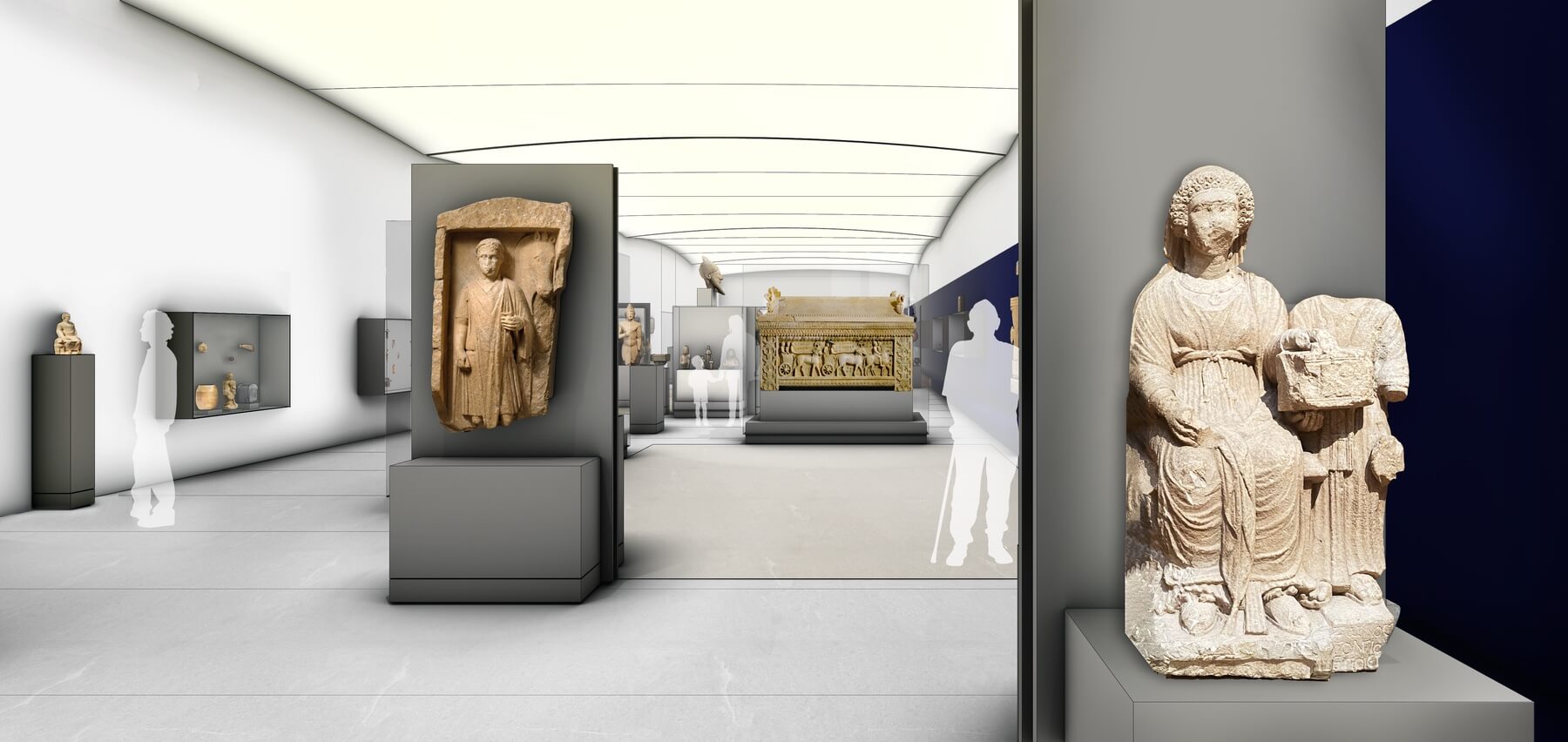New York’s Metropolitan Museum of Art announced today that it will embark on a “complete renovation” of its galleries dedicated to Ancient Near Eastern and Cypriot Art with Boston-based architecture and urban design firm NADAAA helming the $40 million project.
Joining NADAAA for the 15,000-square-foot gallery overhaul in the role of architect of record is Moody Nolan, the largest African American-owned and -operated architecture firm in the United States, along with the Met’s in-house construction team led by Jhaelen Hernandez-Eli. The project design and construction team will work in close collaboration with curatorial teams from the Department of Ancient Near Eastern Art, led by Curator in Charge Kim Benzel, and the Department of Greek and Roman Art, led by Carole O. Moran Curator in Charge Seán Hemingway.
Slated to debut in 2025 with work kicking off next year, the gallery overhaul fuses together two substantial collection areas at the Met that have long been separated. Currently, works of ancient West Asian and Cypriot art—among the most “most comprehensive” collections of their kind in the United States per Met president and CEO Daniel H. Weiss—can be found on the second floor of the museum, where they are spread across 11 galleries adjacent to the Asian and Islamic collections.
When the project is complete, the collections will newly be in “dialogue with each other, reflecting areas of interconnection between their cultures in antiquity,” according to the Met’s press release announcing the project. “The reimagined space will introduce an innovative and forward-thinking approach to presenting art from Cyprus and ancient West Asia—a vast region that includes ancient Iraq, Iran, Turkey, Syria, the Eastern Mediterranean coast, Yemen, and Central Asia—by creating a more deeply engaging experience and providing spaces for contemporary discourse and discussion,” the museum elaborated.
“This bold renovation will present new scholarship and reflect diverse narratives, re-centering regional cultures and perspectives,” said Max Hollein, Marina Kellen French Director of The Met, in a statement. “By integrating these formerly separate areas of The Met collection, we can illuminate meaningful and informative connections with our ancient West Asian and Cypriot holdings and extend those links to nearby galleries presenting Asian, Islamic, and 19th-century European art, as well as to galleries across the Museum.”

As detailed by the Met, galleries dedicated to Ancient Near Eastern and Cypriot art will be united through an open floor plan that not only brings the collections physically closer together but creates “a sense of scale and grandeur befitting the collections.” A “monumental ramp” will physically connect the collections, “deepening the relationship between the works of art on view and improving access for visitors within that space and those moving across the second floor of the Museum,” according to the press announcement. Meanwhile, newly created visas within the reimagined space will open to the Great Hall Balcony and Asian Art displays to the north and galleries dedicated to Islamic Art and European Paintings to the south. In addition to uniting these two substantial collections and reimagining the way visitors move through the space and interact with the art, the building itself stands to benefit from the renovation: plans call for a skylight replacement scheme within the northern half of the project that will yield an estimated 40 percent reduction in energy use within this particular area of the museum.
Last November, the Met announced a $125 million capital gift, the largest in the history of the storied institution, enabling it to move forward with decades-in-the-making plans to renovate its 110,000-square-foot, Kevin Roche-designed modern art wing. The announcement of an architect who will lead that major project is forthcoming.
In addition to the modern art wing renovation and the just-announced makeover of the Ancient Near Eastern and Cypriot galleries, the museum has formally revealed or embarked on a modest handful of other capital projects, including a $70 million transformation of the 1982 Michael C. Rockefeller Wing, which was also designed by Roche and home to the African art, Ancient American art, and Oceanic art galleries. That now-underway overhaul, announced in 2018 and led by wHY Architecture, is expected to be completed by 2024. Aside from renovations and gallery revitalization projects, perhaps the most significant headlines made by the Met in recent months have been related to its dropping of the Sackler name from seven exhibition spaces and a wing due to the pharmaceutical company-owning Sackler family’s role in the opioid crisis.
Today’s news also marks the announcement of the second major cultural project for NADAAA in a matter of days. Earlier this month, historic preservation nonprofit Historic New England revealed that it had selected the firm for a “comprehensive exploration” of its headquarters at the Charles Bulfinch-designed Otis House, a National Historic Landmark-designated historic house-museum in Boston’s West End.
“It’s an honor to be selected for this project, which will address the need for more diverse narratives in the displays of art from ancient West Asia and Mediterranean regions. In bringing disparate layers of the Museum’s architectural history into dialogue, the proposed design hopes to bring the formal, spatial, and material properties of these galleries into alignment with The Museum’s mission,” said Nader Tehrani, principal designer of NADAAA and outgoing dean of the Irwin S. Chanin School of Architecture at the Cooper Union. “By working in collaboration with The Met’s curatorial and construction teams, we will be able to recondition these spaces while facilitating the connection between cultures, civilizations, and geographies to tell a whole new story.”











